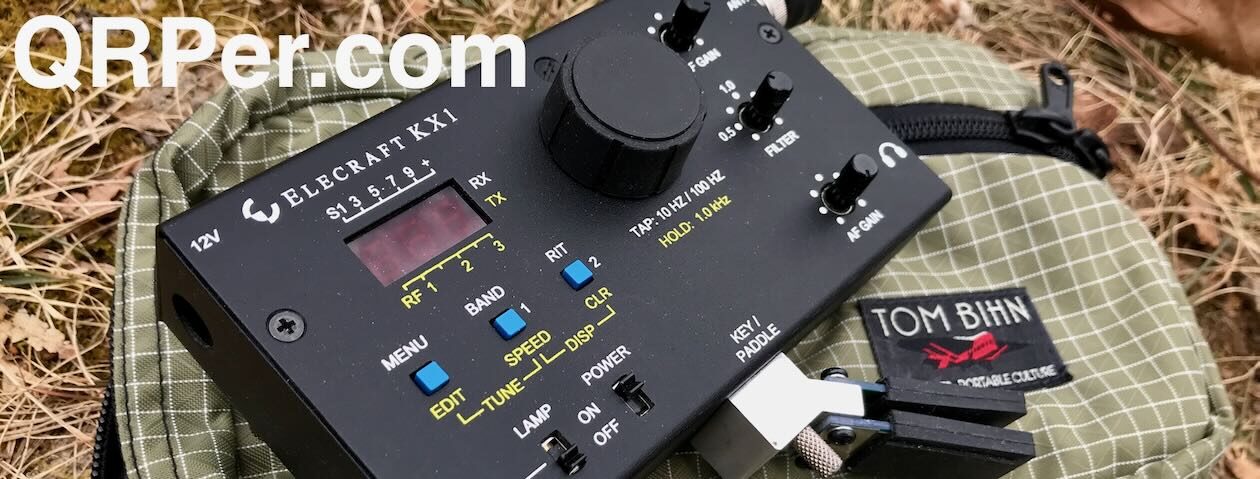Many thanks to Owen (M0KVI) who shares the following article about his portable field radio kit which will be featured on our Field Kit Gallery page. If you would like to share your field kit with the QRPer community, read this post.
M0KVI’s Mountain Topper MTR-3B SOTA Kit
by Owen (M0KVI)
A little about me:
My name is Owen, I live in Sussex in England. I’m a keen hiker and experienced general outdoor type and have dreams of becoming a SOTA Mountain Goat. Unfortunately, I don’t live near any mountains.
There are a few local hills which I activate from time to time. I set out to learn CW around 1.5 years ago starting one December. I spent around one hour every day practicing. Around eight months later, I was activating summits at around 15wpm. I’m still not great at longer QSOs, so some way to go, but pushing on with trying to get head copy there.
My method:
 Having a young family I need to be strategic about trips. My nearest mountainous region is Wales. As I drive for work, I’m not afraid of driving the distance. Many in this country rarely leave their county!
Having a young family I need to be strategic about trips. My nearest mountainous region is Wales. As I drive for work, I’m not afraid of driving the distance. Many in this country rarely leave their county!
I converted my work vehicle into a micro-camper type affair. Think flat space to sleep rather than any camp comforts. A simple camp stove to cook on and that’s it.
I plan trips lasting 48hrs at a time; drive to the area on day one, activate 1 or 2 summits, sleep stealthily close to target summits by roadside or in car parks, then typically get up at around 4:00 am to hike in the dark to activate at sunrise. I typically activate 1 or 2 more summits before driving the 4-7 hours home. Logistically, it’s fairly intense and I’m not sure it’s the calmest method. I think is a fairly unique if not un-hinged method of getting my SOTA fix.
I use Winlink to check in with Family and keep them up to date with any changes to plans which are communicated before I leave.
Radio is an MTR-3B kindly offered for private sale from Colin, (M1BUU). I’ve had the rig for a year or so. Nothing ground-breaking here; all of the kit is largely mirroring what a lot of others are doing for years now. I’m excellent at shortcutting by learning from others.
Having been licenced for a while, I already knew what an ultralight setup would look like. I could still slim this down by a few grams but really carrying water and food now is more of a burden. I’m not fully convinced the MTR-3B is the radio for all occasions as there are a number of connections, cables and fuss. (I think I have wanted the new Elecraft KH1 offering since before it was conceived).
 As can be seen from one of my pics, I use a small micro sun-bathers tent for protecting gear in cloud/rain/wind. This allows me to use HAMRS to log even when its very cold.
As can be seen from one of my pics, I use a small micro sun-bathers tent for protecting gear in cloud/rain/wind. This allows me to use HAMRS to log even when its very cold.
List of contents:
- Mountain Topper MTR-3B (early model lighter blue colour with x – screw not hex)
- Homemade 3ah 18650 3s battery (BMS controlled with fused lead). Made from recovered cells.
- Palm Mini key (with home made rugged braided cable).
- Mini SWR from N6ARA
- LowePro Viewpoint CS40 case

 Antenna system pictured is my regular. I have tried other setups recently but this is the stalwart EFHW composed of a SOTABeams Wire winder 20m lightweight wire and a 64:1 matching unit.
Antenna system pictured is my regular. I have tried other setups recently but this is the stalwart EFHW composed of a SOTABeams Wire winder 20m lightweight wire and a 64:1 matching unit.
The matching unit is a 64:1 obtained from Colin Summers (MM0OPX) following his youtube series on research into the optimum performing toroid material/core. He offered units for sale at cost. It is very small and light and I like to buy stuff off makers what can I say. Guilty of spending money rather than making.
I use a 3m feed line–never bother to ensure the ends of antenna are over 1m off ground. Do not use a counterpoise and only use a single guy rope on my fibreglass pole, (SOTAbeams Tactical Mini). This way I have minimum gear and maximum speed to set up. On my most recent trip, my antenna fell down twice and I didn’t notice but continued to make contacts. Bit of a train wreck.
Set up and pack down times in the AZ (Activation Zone) is typically 10-15 minutes depending on terrain and conditions. In a sunny field, I could pitch in 5 minutes.
73 Owen
M0KVI
Readers: Check out Owen’s social feeds on X: @M0KVI and Instagram: @M0KVI.






 I had just enough of my portable kit with me to make this happen.
I had just enough of my portable kit with me to make this happen.






































